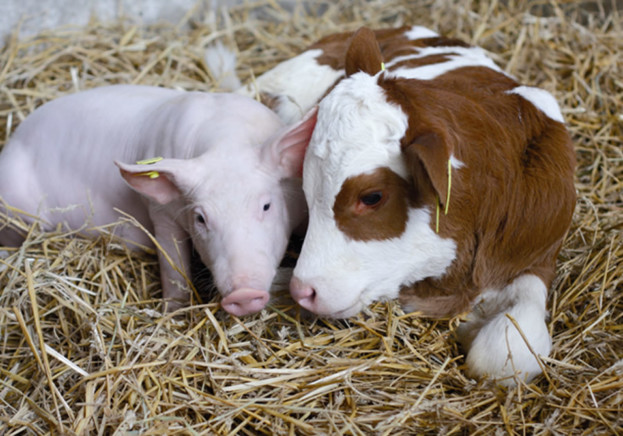A majority of the EU's livestock is held in just a few of the Member States.
Spain accounted for about one-quarter of the EU's pig (25.4%) and sheep (23.6%) populations in 2023, while Greece had a similar share of the EU's goat population (25.8%) and France a somewhat smaller share (22.8%) of the bovine population.
Some EU countries are relatively specialised in terms of livestock farming. For example, Ireland accounted for 8.8% of the EU's bovine animals in 2023 (slightly more than in Spain and Italy), while Denmark accounted for 8.6% of the EU's pig population (only slightly less than in France). After Spain, the second and third largest sheep populations in the EU were in Romania (17.9% of the EU total) and Greece (13.7%).
Downward trend in livestock populations
During the past 2 decades, there has been a sharp reduction in livestock populations across the EU. Between 2003 and 2023, the number of head of each livestock population decreased: the sharpest declines in percentage terms were recorded for the number of sheep and goats (both about 22%), while the smallest was in bovine animal numbers (about 9%).
Looking in more detail at developments between 2022 and 2023, the populations of sheep, pigs and bovine animals all decreased at a similar rate (between -1.0% and -1.5%) but that of goats was much sharper (down 5.2%).
Until 2020/21, there was relative price stability for live cattle and live sheep and goats. This was not the case for live pigs, for which there was more cyclical volatility. However, through much of the period between 2020 and 2023 prices rose sharply.
The price of live pigs rose an estimated 21.8% in 2023, following an increase of 26.4% in 2022. The price of live sheep and goats rose an estimated 7.0% in 2023, following an increase of 11.0% in 2022. The price of live cattle also rose slightly in 2023 (+3.3%), after a sharp increase of 25.6% in 2022. Those price rises look to have topped out in the 3rd quarter of 2023.
thepigsite.com



